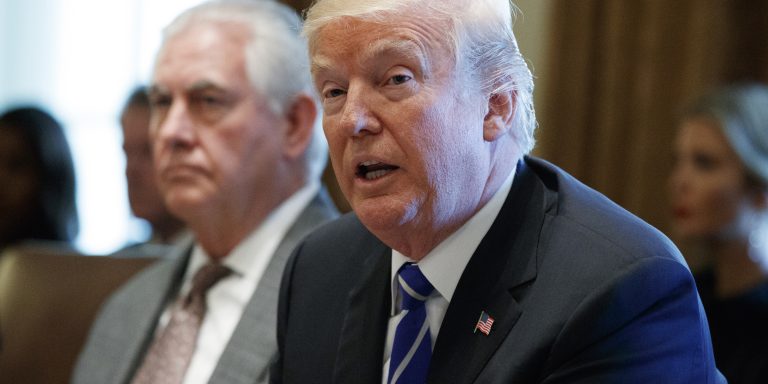INTELBRIEF
December 14, 2017
TSC IntelBrief: Three Threats the U.S. Faces in 2018

• The U.S. will enter 2018 facing three serious national security threats, while its ability to counter those threats is decreasing.
• The first threat is not new: a series of unresolved violent conflicts in states throughout the Middle East and Africa, including Syria, Somalia, Afghanistan and Yemen, which are destroying infrastructure and institutions and putting generations of children at risk.
• The second threat is global climate change, with the U.S. increasingly isolating itself from international agreements and environmental standards.
• The third threat is domestic: a series of social and political conflicts dividing the U.S. that appear to be getting worse.
While the U.S. faces an array of complex national security threats, three in particular are among the biggest causes for concern, with broad ramifications going into 2018 and beyond. Two of the three can only be mitigated or resolved through persistent multilateral diplomacy, at a time when the Trump administration has mostly rejected that approach. The third is a serious self-inflicted wound to the U.S. polity that is damaging the country’s ability to manage its affairs, both at home and abroad.
The first threat has bedeviled the U.S. and the rest of the international community for more than a decade: persistent wars and insurgencies that are ruining states in Africa and the greater Middle East, while spreading instability and terrorism far beyond their borders. The war in Syria continues, with the regime of Bashar al-Assad making gains, thanks in large part to its backing from Russia and Iran. Civilians continue to die in large numbers from indiscriminate air strikes, along with a toxic array of chemical weapons and barrel bombs. While the so-called Islamic State has been defeated in Iraq and holds little ground in Syria, it will remain a dire threat to whatever regime finally emerges in Damascus, all but guaranteeing that the fighting will taper off without coming to an end.
In Afghanistan, the U.S. finds itself once again sending more troops and launching more air strikes in an effort to win a conflict that cannot be resolved militarily. Washington continues to try and push Pakistan to end its support for the Haqanni network and other groups involved in cross-border terrorism. However, those efforts have not changed the dynamic of the war. The Kabul government has also failed to bring good governance or clean up wide-spread corruption, not implementing what could be the best weapons available in the war against the Taliban.
In Yemen, the U.S. has to share responsibility with all parties for what has become an unending humanitarian nightmare. While there has been movement in Congress to curb military support for the Saudi-led coalition fighting the Houthi rebels, it has not led to any significant action. Those conflicts, and others in Somalia, Nigeria, Niger and other nations will increasingly draw in U.S. military assets and personnel, from drone strikes to ground troops. Without multilateral diplomacy, addressing these issues will be difficult to impossible, leaving Washington on the sidelines.
The second threat is a global challenge: climate change. In 2015, the Pentagon released a report entitled ‘National Security Implications of Climate-Related Risks and a Changing Climate.’ The report highlighted the risks posed by the effects of rapid climate change, from rising sea levels and fresh water scarcity, to combatant command locations that might be at risk from climate-induced disasters. That report and similar warnings notwithstanding, the Trump administration has made dismissing or marginalizing climate change a domestic and international priority. Washington’s stance on climate change has isolated the U.S. from the world community where the issue is concerned. The U.S. is also promoting coal-based energy, at direct odds with the global consensus on how to address what is, perhaps, the greatest challenge in modern times.
The third threat is a self-inflicted wound: U.S. political and social divisions that appear to be getting worse. As these divisions widen, they are having significant negative impacts on the nation’s governance, politics, and general social cohesion. With assaults on the press as purveyors of ‘fake news’ and the demonization of opponents on all sides, the U.S. is weakening itself and diminishing the likelihood that it can summon the unity necessary to address a series of internal challenges. Faced with crises including a crumbling national infrastructure and environmental disasters like wildfires in major cities, the U.S. is unable to form thoughtful cooperative responses because its polarized polity is unable to agree. Meanwhile, the ongoing destruction of public trust in long-standing agencies and threats to something as basic as ‘rule of law’ may prove to be as damaging to the U.S. as any war or natural disaster.
For tailored research and analysis, please contact: info@thesoufancenter.org
.
.